注:本文为 “月球年龄与起源” 相关科普合辑。
英文引文,机翻未校。
如有内容异常,请看原文。
How Old Is the Moon? Scientists Say They Finally Know
月球有多古老?科学家称他们终于有了答案
By Mike Wall published January 12, 2017
作者:迈克·沃尔 发布于 2017 年 1 月 12 日
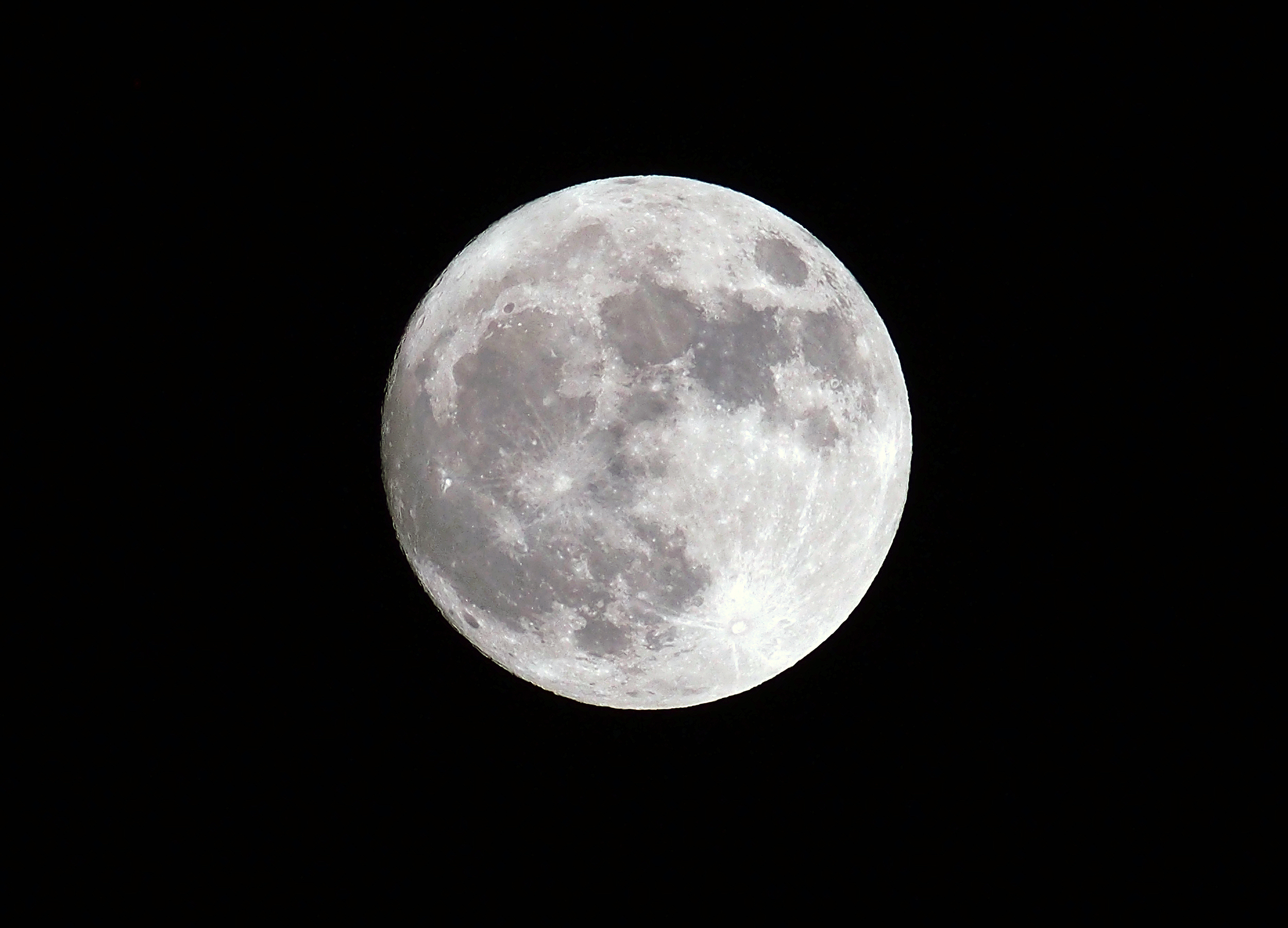
The “supermoon” of Nov. 13, 2016, as seen from the University of California, Los Angeles. (Image credit: Mélanie Barboni)
2016 年 11 月 13 日的“超级月亮”,从加州大学洛杉矶分校拍摄。(图片来源:梅拉妮·巴尔博尼)
The moon is a very old soul, it turns out.
事实证明,月球是一个非常古老的天体。
A new analysis of lunar rocks brought to Earth by Apollo astronauts suggests that the moon formed
4.51
4.51
4.51 billion years ago — just
60
60
60 million years after the solar system itself took shape.
对阿波罗宇航员带回地球的月球岩石进行的一项新分析表明,月球形成于
45.1
45.1
45.1 亿年前——距离太阳系本身形成仅过去了
6000
6000
6000 万年。
Some previous studies have come up with similar estimates, while others have argued for a younger moon that coalesced
150
150
150 million to
200
200
200 million years after the solar system was born. The new finding, which was published today (Jan. 11) in the journal Science Advances, should settle this long-standing debate, team members said.
此前一些研究得出了类似的估计,而另一些研究则认为月球更年轻,在太阳系诞生后
1.5
1.5
1.5 亿至
2
2
2 亿年才凝聚形成。研究团队成员表示,这项于今日(1 月 11 日)发表在《科学进展》期刊上的新发现,应该能解决这一长期存在的争议。
“We are really sure that this age is very, very robust,” lead author Melanie Barboni, a researcher in UCLA’s Earth, Planetary, and Space Sciences Department, told Space.com.
“我们非常确定这个年龄非常、非常可靠,”该研究的主要作者、加州大学洛杉矶分校地球、行星与空间科学系的研究员梅拉妮·巴尔博尼告诉太空网。
The moon’s birth
月球的诞生
Astronomers think the moon was born after a Mars-size body (or a series of such big objects) slammed into the early Earth. Some of the material blasted into space coalesced to form Earth’s nearest neighbor, the thinking goes.
天文学家认为,月球诞生于一颗火星大小的天体(或一系列此类大型天体)撞击早期地球之后。据推测,一些被抛射到太空的物质凝聚形成了地球最近的邻居——月球。
But it’s been hard to pin down exactly when this impact, or these impacts, occurred, Barboni said. That’s because the rocks collected by Apollo astronauts and studied by scientists tend to be breccias — jumbles of different rock types mashed together by meteorite strikes (which are very common on the lunar surface, because the moon has almost no atmosphere to burn up falling space rocks).
巴尔博尼说,但很难确切确定这次或这些撞击发生的时间。这是因为阿波罗宇航员带回的、科学家研究的岩石往往是角砾岩——由陨石撞击(月球表面非常常见,因为月球几乎没有大气层来烧毁坠落的太空岩石)挤压在一起的多种岩石的混合物。
“You don’t have pristine, old rock preserved on the moon,” Barboni said. “That’s one of the biggest problems — the whole-rock record on the moon is not there.”
“月球上没有保存完好的原始古老岩石,”巴尔博尼说。“这是最大的问题之一——月球上没有完整的岩石记录。”
So Barboni and her team decided to take a different tack. Rather than study entire rocks and hope they date all the way back to the moon’s birth, the team dated the formation of the object’s mantle and overlying crust.
因此,巴尔博尼和她的团队决定采取另一种方法。他们没有研究整块岩石并希望能追溯到月球诞生之时,而是测定了月球地幔和上覆地壳的形成年代。
This “differentiation” occurred shortly after the giant impact(s), when a global liquid-magma ocean initially present on the moon cooled and solidified. And this solidification left a signal, Barboni said — a mineral called zircon.
这种“分异作用”发生在巨型撞击之后不久,当时月球表面最初存在的全球性液态岩浆海洋冷却并凝固。巴尔博尼说,这种凝固留下了一个信号——一种名为锆石的矿物。
“If you want to date this process, we use the mineral zircon, because that’s the best time capsule you can find,” she said.
“如果想测定这个过程的年代,我们会使用锆石矿物,因为它是你能找到的最好的时间胶囊,”她说。
The researchers studied zircon fragments in rocks collected by Apollo 14 astronauts in 1971. The team dated the samples radiometrically, by measuring how much of their uranium had decayed into lead, and how their hafnium had decayed into various “daughter isotopes.” (Isotopes are variants of an element that have the same number of protons in their nuclei but different numbers of neutrons.)
研究人员对 1971 年阿波罗 14 号宇航员带回的岩石中的锆石碎片进行了研究。该团队通过放射性测年法测定样本年代,测量其中铀衰变为铅的量,以及铪衰变为各种“子同位素”的量。(同位素是元素的变体,其原子核中质子数相同,但中子数不同。)
The team’s analyses show that the zircon fragments are pristine and ancient, dating back to the solidification of the magma ocean, Barboni said. The researchers also managed to correct for the influence of galactic cosmic-ray impacts, which can complicate dating attempts by injecting neutrons into samples, she added.
巴尔博尼说,团队的分析表明,这些锆石碎片是原始且古老的,可以追溯到岩浆海洋凝固时期。她补充说,研究人员还成功校正了银河宇宙射线撞击的影响,这种撞击会向样本中注入中子,从而使测年工作变得复杂。
The age the team came up with for the moon —
4.51
4.51
4.51 billion years, give or take
10
10
10 million years — should therefore stand the test of time, Barboni said.
巴尔博尼说,因此团队得出的月球年龄——
45.1
45.1
45.1 亿年左右,误差不超过
1000
1000
1000 万年——应该经得起时间的考验。
“We were able to correct for everything that was a problem before, the reasons people said zircon couldn’t be used,” she said.
“我们能够校正之前所有存在的问题,也就是人们认为锆石不能用于测年的那些原因,”她说。
The moon’s advanced age also makes sense from a dynamics point of view, especially if the giant-impact(s) theory is correct, Barboni said. That’s because more impactors were flying around in the solar system’s very early days than
100
100
100 million years or so later, she said.
巴尔博尼说,从动力学角度来看,月球的古老年龄也是合理的,尤其是如果巨型撞击理论是正确的话。她说,这是因为太阳系早期存在的撞击体比大约 1 亿年后要多。
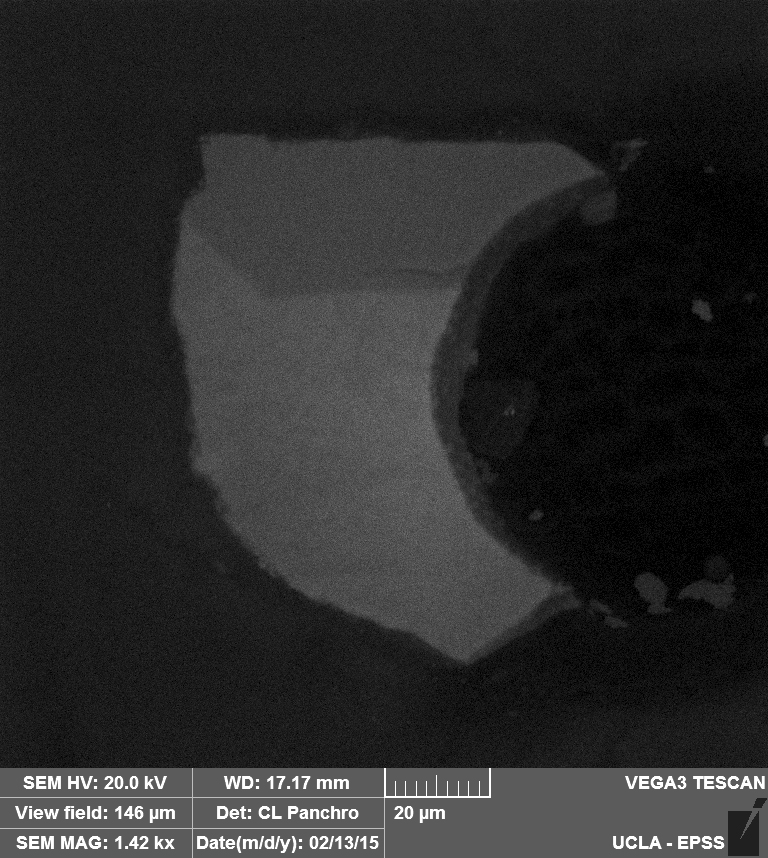
Zircon extracted from lunar breccia 14304 collected during the Apollo 14 mission in 1971. (Image credit: Mélanie Barboni)
1971 年阿波罗 14 号任务期间收集的月球角砾岩 14304 中提取的锆石。(图片来源:梅拉妮·巴尔博尼)
Ties to life on Earth
与地球生命的关联
The new result should be of interest to any astronomer who wants a better understanding of how the moon, Earth and solar system in general formed and evolved, according to Barboni.
巴尔博尼表示,任何想要更好地了解月球、地球以及整个太阳系如何形成和演化的天文学家,都应该会对这项新结果感兴趣。
For example, life on Earth appears to have gotten a foothold by at least
4.1
4.1
4.1 billion years ago. This extreme antiquity may seem surprising, given that the moon-forming impact(s) likely heated up Earth tremendously, completely reshaping and remaking the planet’s surface.
例如,地球生命似乎至少在
41
41
41 亿年前就已经立足。考虑到形成月球的撞击可能使地球急剧升温,彻底重塑了地球表面,如此悠久的生命历史可能令人惊讶。
But it’s less surprising with an old moon than with a young one, Barboni said.
但巴尔博尼说,相比于月球较年轻的情况,月球古老的话,这就不那么令人惊讶了。
“That makes much more sense, if actually the Earth started evolving from
4.5
4.5
4.5 [billion years ago] rather than the Earth evolving from
4.3
4.3
4.3 [billion years ago],” she said.
“如果地球实际上是从
45
45
45 亿年前开始演化,而不是
43
43
43 亿年前,这就更合理了,”她说。
Follow Mike Wall on Twitter @michaeldwall and Google+. Follow us @Spacedotcom, Facebook or Google+. Originally published on Space.com.
关注迈克·沃尔的推特账号 @michaeldwall 和谷歌+账号。关注我们的推特账号 @Spacedotcom、脸书账号或谷歌+账号。本文最初发表于太空网。
Mike Wall
迈克·沃尔
Senior Space Writer
资深太空专栏作家
How the Moon Formed: 5 Wild Lunar Theories
月球如何形成:5 种疯狂的月球理论
By Mike Wall published April 3, 2014
作者:迈克·沃尔 发布于 2014 年 4 月 3 日
Introduction
引言
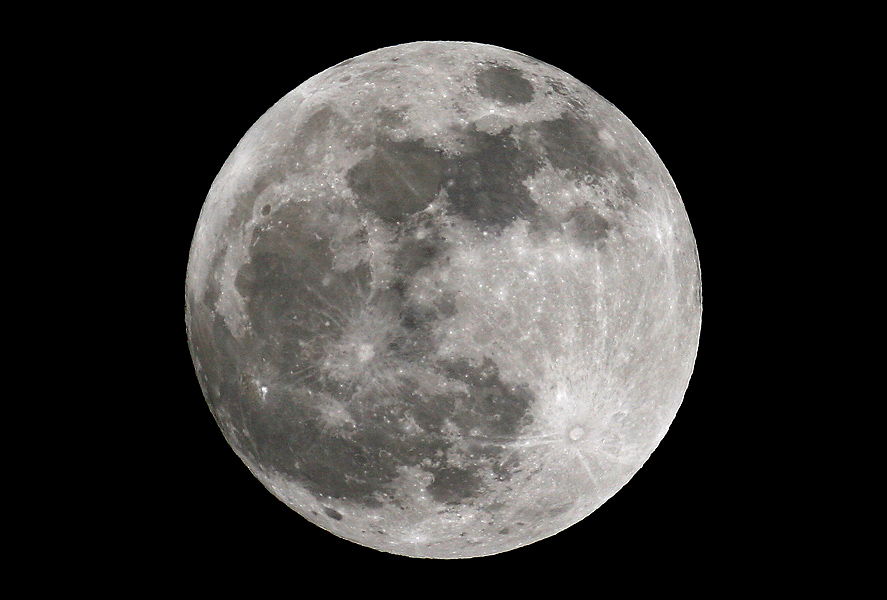
Imelda B. Joson and Edwin L. Aguirre
伊梅尔达·B·若森与埃德温·L·阿吉雷
The moon has fascinated humanity for millenia, exerting a powerful pull on our imagination just as it tugs on the oceans to create the tides.
数千年来,月球一直令人类着迷。它不仅牵动着海洋形成潮汐,也深深吸引着我们的想象力。
After gazing up at the moon for all those years, however, we’re still not exactly sure how it came to be. Here’s a brief rundown of the most prominent theories scientists have come up with to explain the moon’s origin, including a few relatively wild ones with little observational evidence to back them up.
然而,尽管凝望月球这么多年,我们仍然不能确切知道它是如何形成的。以下是科学家们提出的、解释月球起源的最主要理论简介,其中包括一些相对疯狂、缺乏观测证据支持的理论。
FIRST STOP: A Captured Moon?
第一站:捕获的月球?
Capture
捕获说
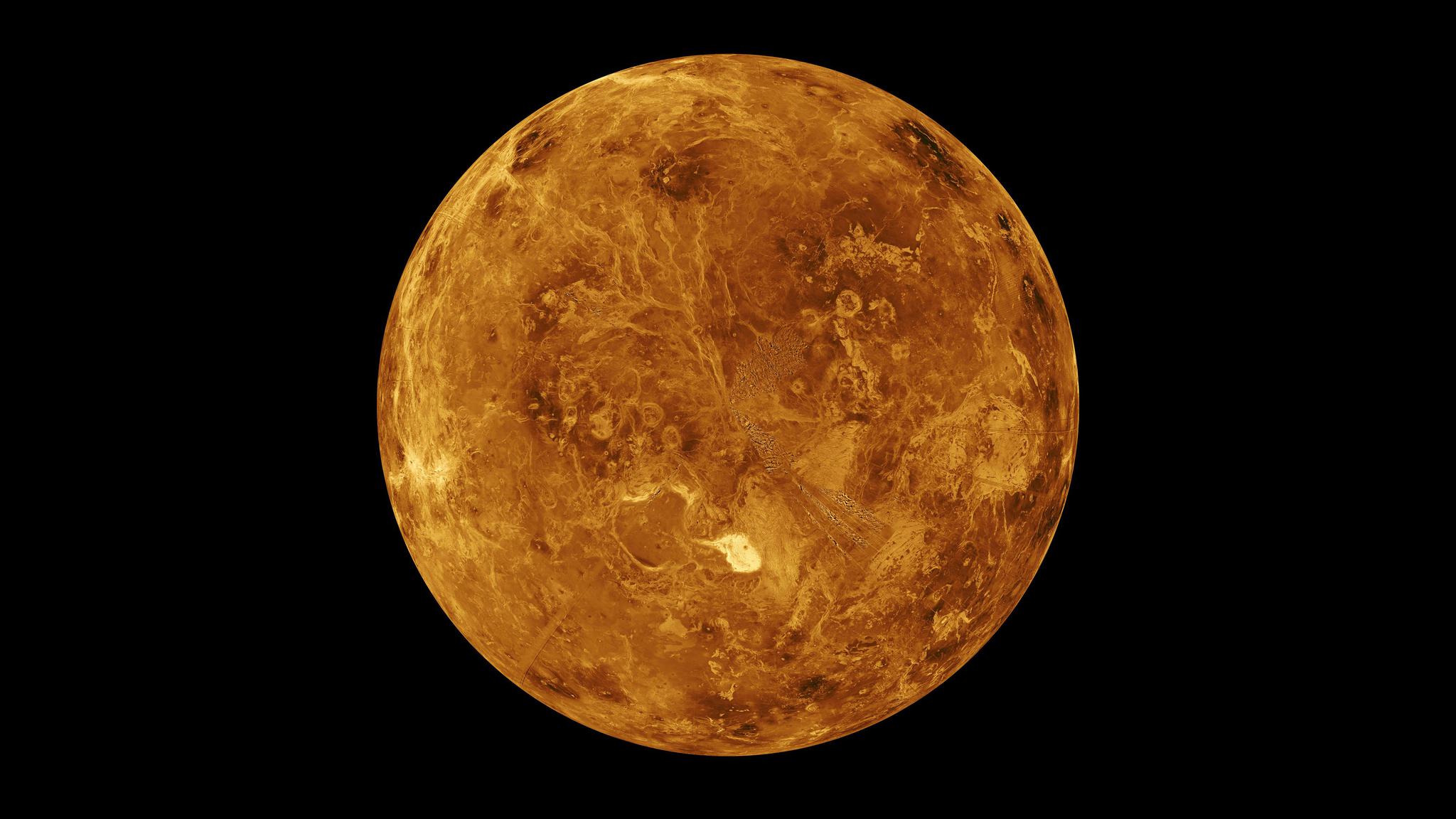
[Venus, April 2014](https://i-blog.csdnimg.cn/img_convert/24366fbcb452951b058e789da4d8df43.jpeg =700x)
Starry Night Software
Some researchers suggest that the moon may have originally formed elsewhere — perhaps even around another planet, such as Venus — before being grabbed by Earth’s gravitational pull. Other worlds have gained moons in this manner. For example, Phobos and Deimos, the two tiny satellites of Mars, are thought to be captured asteroids.
一些研究人员认为,月球可能最初形成于其他地方——甚至可能围绕金星等另一颗行星运行——之后被地球的引力捕获。其他天体也通过这种方式获得了卫星。例如,火星的两颗小卫星火卫一和火卫二,就被认为是捕获的小行星。
The capture idea isn’t really an origin theory, of course; it just concerns how the moon came to orbit Earth. And it has some major problems, the most serious of which is the geochemical similarity of the Earth and moon. The two bodies have nearly identical oxygen isotope ratios, suggesting that they formed from the same pool of raw material.
当然,捕获说并不是真正的起源理论,它只涉及月球如何开始围绕地球运行。而且该理论存在一些重大问题,最严重的是地球和月球的地球化学相似性。这两个天体的氧同位素比值几乎完全相同,表明它们形成于同一原始物质库。
NEXT: Spinning Off
下一站:分裂而出
Fission
分裂假说
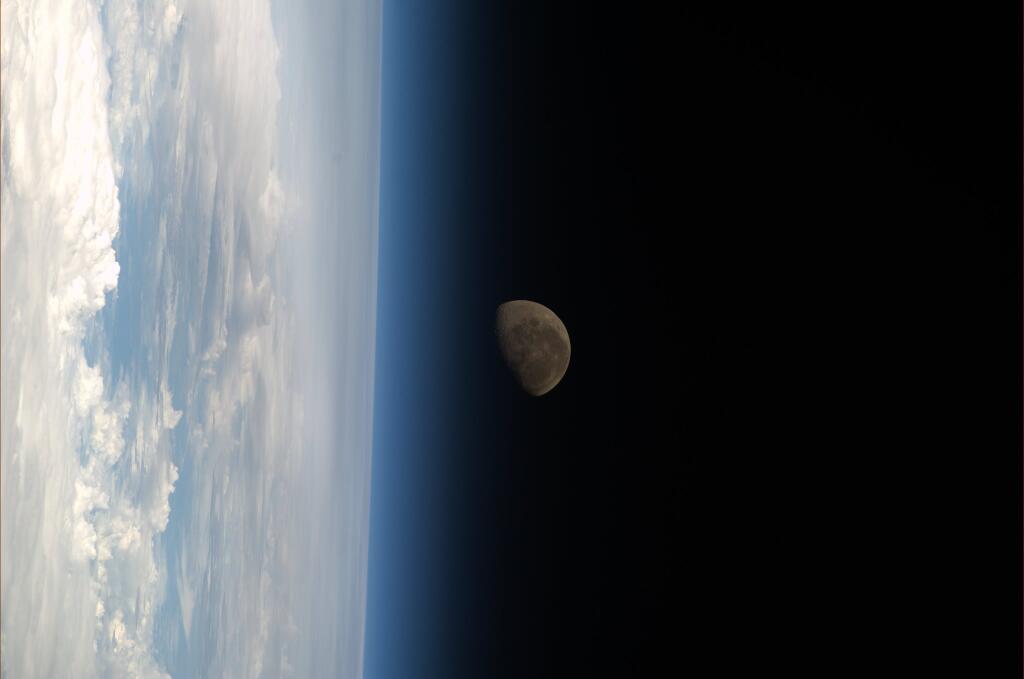
JAXA/Koichi Wakata via @Astro_Wakata
日本宇宙航空研究开发机构/若田光一 via @Astro_Wakata
Another idea — apparently thought up by Charles Darwin’s son George in the 19th century — posits that the material that formed the moon was ejected into space by a molten, fast-spinning Earth in the very early days of the solar system.
另一种观点——显然是由查尔斯·达尔文的儿子乔治在 19 世纪提出的——认为,形成月球的物质是在太阳系早期,由熔融状态、快速自转的地球抛射到太空的。
Most scientists discount the fission hypothesis, saying that Earth could not have been spinning fast enough to expel a huge blob of rock. But one 2010 study suggested that a natural nuclear explosion, set up by the superconcentration of radioactive elements, may have provided the kick to dislodge a moon-size piece of the early Earth into orbit.
大多数科学家不认同分裂假说,认为地球的自转速度不足以抛出一大块岩石。但 2010 年的一项研究表明,放射性元素的高度集中引发的自然核爆炸,可能提供了推力,将早期地球一块月球大小的物质推入轨道。
NEXT: Forming With Earth
下一站:与地球共同形成
Co-formation
共同形成说
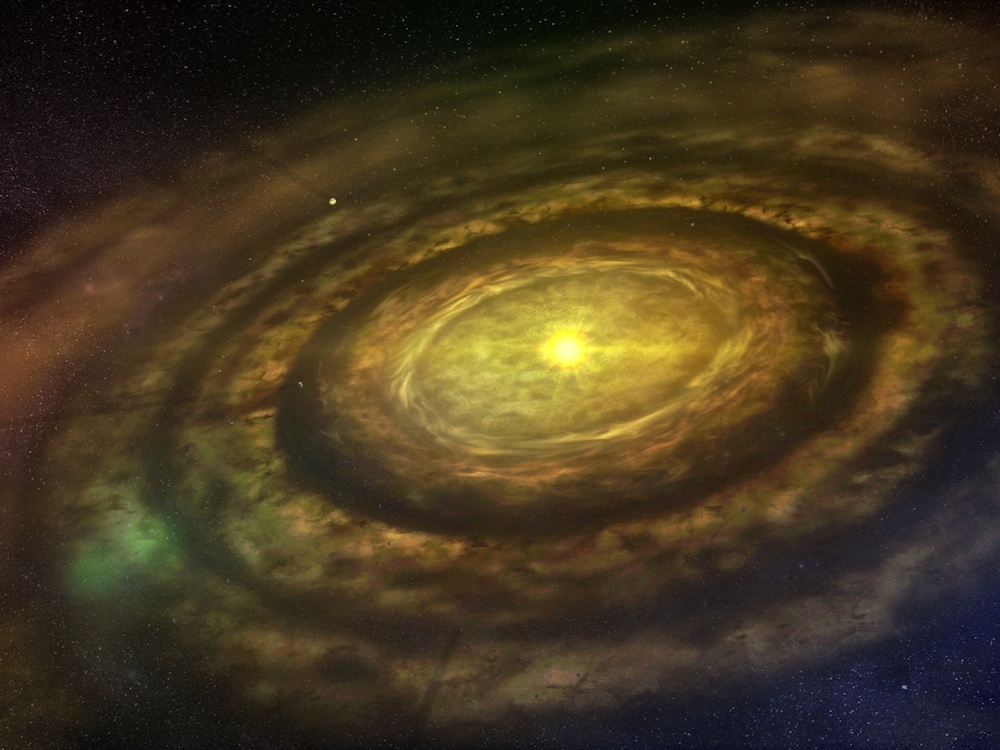
Formation of Planets in a Protoplanetary Disk
原行星盘中的行星形成过程
University of Copenhagen, Lars A. Buchhave
哥本哈根大学,拉尔斯·A·布哈夫
It’s also possible that the moon formed alongside Earth
4.5
4.5
4.5 billion years ago, coalescing from gas and dust in the same part of our solar system’s protoplanetary disk.
月球也可能在 45 亿年前与地球一同形成,由太阳系原行星盘同一区域的气体和尘埃凝聚而成。
While this hypothesis can account for the isotopic similarities between the Earth and moon, it falls short in other ways. It cannot explain the high angular momentum of the Earth-moon system, for example, or why the moon has such a small iron core compared to that of our planet.
虽然这一假说能解释地球和月球之间的同位素相似性,但在其他方面存在不足。例如,它无法解释地月系统的高角动量,也无法解释为什么月球的铁核相对于地球来说如此之小。
NEXT: Asteroid Rubble
下一站:小行星碎片
Colliding planetesimals
星子碰撞说
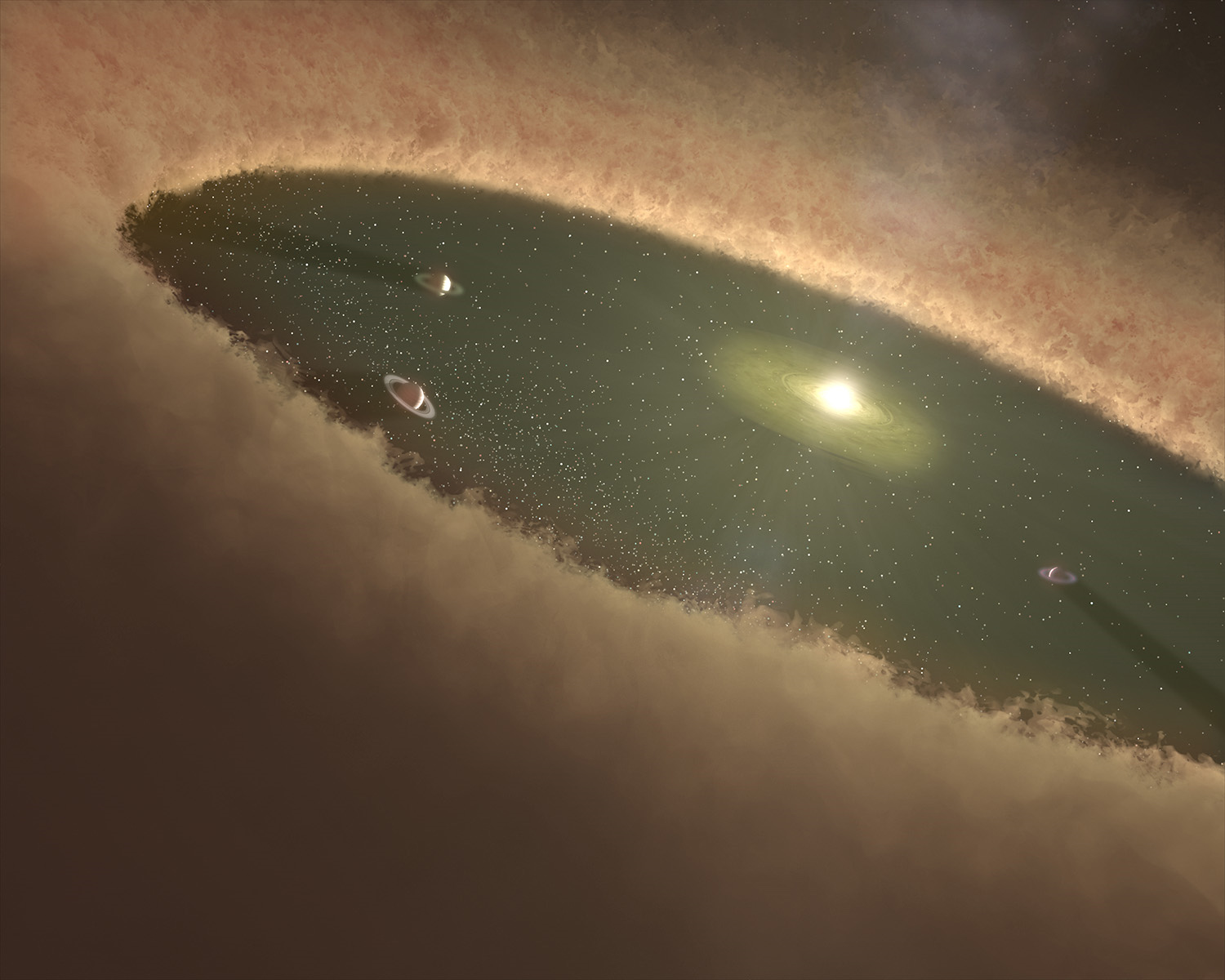
As planetesimals drift toward their star, they should clear out a path from the gas they move through. Some of that gas helps the planet to grow
当星子向恒星漂移时,它们会在穿行的气体中开辟出一条路径。其中部分气体有助于行星生长。
NASA/ JPL-Caltech/ T. Pyle (SSC)
美国国家航空航天局/加州理工学院喷气推进实验室/ T·派尔(太空科学研究所)
Some scientists have suggested that the moon condensed from the debris produced when planetesimals — the building blocks that grew into Earth, Mars and other full-fledged planets — slammed into each other shortly after the solar system formed.
一些科学家提出,月球是由星子碰撞产生的碎片凝聚而成的。星子是构成地球、火星以及其他成熟行星的基石,它们在太阳系形成后不久发生了相互碰撞。
Little evidence supports this theory, which also cannot explain the geochemical similarities between the Earth and its natural satellite.
这一理论缺乏证据支持,也无法解释地球与其天然卫星之间的地球化学相似性。
NEXT: A Huge Smash-Up
下一站:巨型撞击
Giant impact
巨型撞击说

Moon Born in Violence
暴力中诞生的月球
NASA/JPL-Caltech
美国国家航空航天局/加州理工学院喷气推进实验室
The leading theory of the moon’s formation posits that it coalesced from material blasted into space when a planet-size body slammed into the newly formed Earth about
4.4
4.4
4.4 billion years ago.
月球形成的主流理论认为,大约
44
44
44 亿年前,一颗行星大小的天体撞击了新生的地球,被抛射到太空的物质凝聚形成了月球。
One variant of this idea holds that the impactor, dubbed “Theia,” was about the size of Mars. Another version, introduced in 2012, suggests that both the impactor and the target — the proto-Earth — were about 50 percent as massive as Earth is today.
这一观点的一个变体认为,这颗被称为“忒伊亚”的撞击体大约有火星那么大。2012 年提出的另一个版本则认为,撞击体和撞击目标——原始地球——的质量都约为今天地球的
50
%
50\%
50%。
While the giant-impact hypothesis continues to be tweaked and refined, it does the best job of explaining the moon’s composition and orbit, most scientists say. For example, the theory predicts a small iron core for the moon, since it would have formed primarily from the mantles of the impactor and early Earth (both of which lacked iron, which had already been concentrated deep in the core).
大多数科学家表示,尽管巨型撞击假说仍在不断调整和完善,但它在解释月球的成分和轨道方面表现最佳。例如,该理论预测月球的铁核很小,因为月球主要由撞击体和早期地球的地幔形成(两者都缺乏铁,铁已集中在核心深处)。
Mike Wall
迈克·沃尔
Senior Space Writer
资深太空专栏作家
10 fascinating facts about the moon
10 个关于月球的迷人事实
By Rebecca Sohn last updated March 2, 2024
作者:丽贝卡·索恩 最后更新于 2024 年 3 月 2 日
Learn more about our nearest celestial neighbor with these 10 moon facts.
通过这 10 个月球事实,进一步了解我们最近的天体邻居。
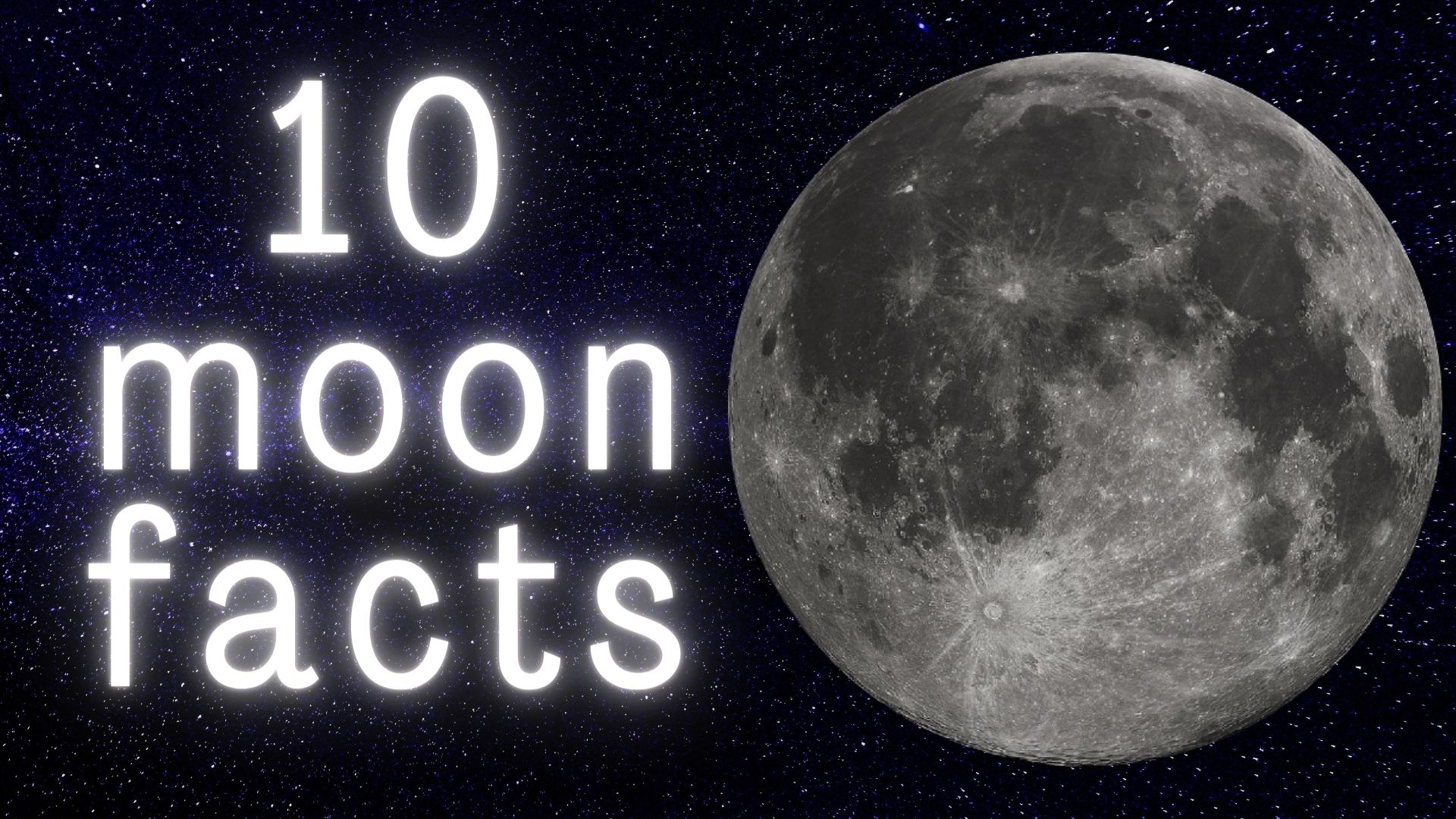
Learn more about our nearest celestial neighbor with these 10 moon facts. (Image credit: Created in Canva by Daisy Dobrijevic)
通过这 10 个月球事实,进一步了解我们最近的天体邻居。(图片来源:黛西·多布里耶维奇 在 Canva 制作)
The moon may seem mundane, yet it benefits and influences life on Earth in many ways, from the moonlight it sheds to the tides it creates.
月球可能看似平凡,但它在许多方面造福并影响着地球生命——从它散发的月光到它引发的潮汐。
It has also influenced human culture, featuring in mythology and helping humans keep track of time. Humans and many other forms of life depend on the moon, and it is the only celestial body besides Earth we have visited.
它也影响着人类文化,出现在神话传说中,还帮助人类记录时间。人类和许多其他生命形式都依赖月球,它也是除地球外我们唯一造访过的天体。
Although the moon still holds mysteries, we’ve learned a lot about our planet’s natural satellite. Here are 10 fascinating facts about the moon.
尽管月球仍有许多谜团,但我们已经对这颗地球的天然卫星有了不少了解。以下是关于月球的 10 个迷人事实。
1. The moon probably formed in a giant collision
1. 月球很可能形成于一次巨型撞击
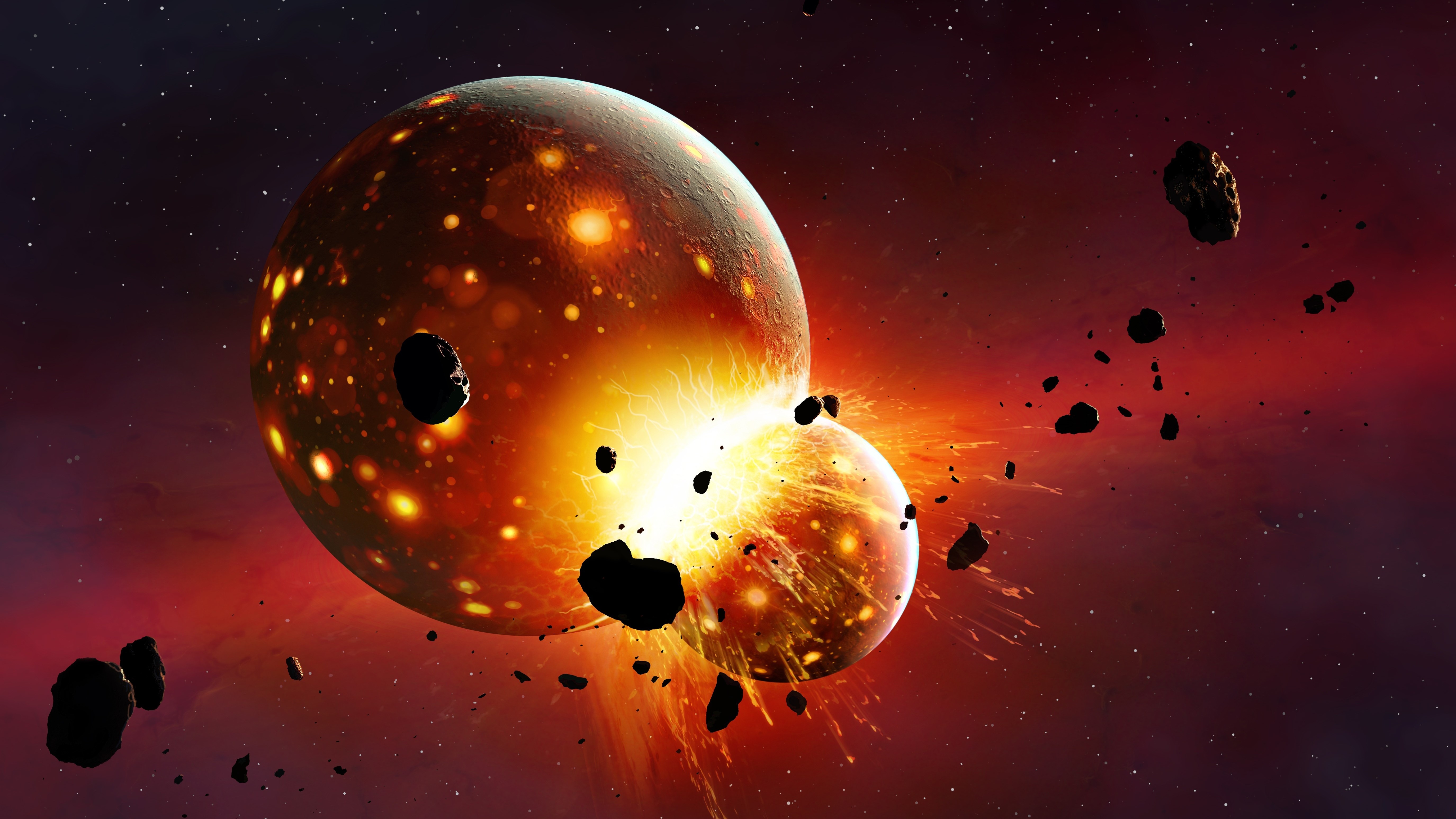
moon collision graphic showing two large spherical objects crashing into each other in space.
太空中两个大型球状天体相撞的月球撞击示意图
The giant impact theory is proposes that the moon was created in a violent collision. (Image credit: MARK GARLICK via Getty Images)
巨型撞击理论认为,月球诞生于一次剧烈碰撞。(图片来源:马克·加里克 通过盖蒂图片社)
The most widely accepted explanation for how the moon formed is called the giant-impact theory, which proposes that a Mars-size planet collided with the early Earth, forming a cloud of debris that eventually coalesced into the moon. Much of the debris would have come from the colliding planet, but some would have originated from Earth and been ejected into space during the collision, according to the Natural History Museum in London.
关于月球如何形成,最被广泛接受的解释是巨型撞击理论。该理论认为,一颗火星大小的行星与早期地球相撞,形成的碎片云最终凝聚成了月球。伦敦自然历史博物馆表示,大部分碎片来自撞击行星,但也有部分源于地球,在碰撞过程中被抛射到太空。
Evidence of this impact can be found in the moon samples taken during the Apollo missions, which show that the moon’s composition has similarities to and differences from Earth’s geological composition.
阿波罗任务带回的月球样本中能找到这次撞击的证据,这些样本表明月球的成分与地球的地质成分既有相似之处,也存在差异。
2. The moon’s phases depend on its position
2. 月球的相位取决于其位置
The phases of the moon are determined by where the moon is in relation to Earth and the sun. If Earth is directly between the sun and the moon, the side of the moon facing Earth is fully illuminated and we see a full moon. But if the moon is between Earth and the sun, the illuminated side faces away from us and it is a new moon, meaning we don’t see the moon at all.
月球的相位由月球相对于地球和太阳的位置决定。如果地球位于太阳和月球正中间,月球朝向地球的一面会被完全照亮,我们看到的就是满月。但如果月球位于地球和太阳之间,被照亮的一面会背向我们,此时就是新月,意味着我们完全看不到月球。
In between a new moon and a full moon, different portions of the part of the moon the sun illuminates are visible from Earth, creating the moon’s phases. When the moon appears to increase in size until it is full, it is said to be waxing; when it is decreasing, it is waning.
在新月和满月之间,太阳照亮的月球部分中,不同比例的区域能从地球看到,这就形成了月球的各种相位。当月球看起来逐渐变大直至满月时,称为“盈月”;当它逐渐变小的时候,称为“亏月”。
3. The “dark” side of the moon is not actually dark
3. 月球的“暗面”其实并不暗
Although we see only one side of the moon, half of it is always illuminated by the sun, and it’s not usually just the portion we can see (except during the full moon). Therefore, the “dark” side of the moon is dark only from our perspective on Earth.
尽管我们只能看到月球的一面,但它总有一半会被太阳照亮,而且通常不只是我们能看到的那部分(满月时除外)。因此,月球的“暗面”只是相对于地球上的我们而言是暗的。
Instead, it’s more accurate to call it the far side of the moon. Even though we can’t see that side from Earth, several missions have photographed and studied the far side of the moon, with the first photos of the lunar far side taken by the Soviet Union’s Luna 3 space probe in 1959.
更准确的说法应该是“月球背面”。虽然我们从地球看不到这一面,但已有多个任务对其进行了拍摄和研究——1959 年,苏联的月球 3 号探测器拍摄到了首张月球背面的近距离照片。
4. The moon produces and changes the tides
4. 月球引发并改变潮汐

Red sailboat sailing among floating icebergs in front of the full moon rising at Arctic Ocean in Greenland, Ilulissat Icefjord, Ilulissat, Disko Bay, Unesco World Heritage Site.
在格陵兰岛北冰洋的伊卢利萨特冰峡湾(联合国教科文组织世界遗产),一轮满月升起,一艘红色帆船在浮冰之间航行
The moon is responsible for Earth’s tides. (Image credit: Juan Maria Coy Vergara via Getty Images)
月球是地球潮汐的成因。(图片来源:胡安·马里亚·科伊·贝尔加拉 通过盖蒂图片社)
You likely know that the moon’s gravity is the main cause of the tides on Earth. This gravitational pull causes two bulges in Earth’s oceans that represent high tides: one in the part of the ocean on the side closest to the moon, and one on the opposite side. The area of high tide opposite the moon is caused by the moon pulling the planet and not the ocean toward it. Between these two bulges of high tide are areas of low tide.
你可能知道,月球的引力是地球潮汐的主要成因。这种引力会导致地球海洋出现两个凸起,也就是涨潮:一个在海洋最靠近月球的一侧,另一个在相反一侧。月球对面的涨潮区域,是因为月球将地球(而非海洋)向自身方向拉扯形成的。两个涨潮凸起之间的区域则是退潮。
Though the moon’s gravity is the strongest cause of tides on Earth, our planet’s rotation and the gravitational force of the sun also contribute. The strength of the tides and the water level have varied widely throughout Earth’s history, but this is mostly caused by changes in climate and sea level, the shifting of Earth’s continents (plate tectonics) and several other factors.
尽管月球引力是地球潮汐最强的成因,但地球自转和太阳引力也有影响。地球历史上,潮汐强度和水位变化很大,但这主要是由气候和海平面变化、地球大陆漂移(板块构造)以及其他多种因素导致的。
5. Earth’s gravity also affects the moon
5. 地球引力也会影响月球
Just as the moon’s gravity causes the tides, Earth also affects the moon — and not just by keeping it in orbit. We see this effect every night in the familiar “man in the moon.” The pattern of markings is always the same because the same side of the moon always faces Earth. This is called tidal locking" and is caused by the gradual impact of Earth’s gravity on the moon. Our planet exerts a much stronger pull on the moon than it does on us.
就像月球的引力会引发潮汐一样,地球也会影响月球——而且不只是将它维持在轨道上。我们每晚看到的熟悉的“月面人像”,就是这种影响的体现。月面标记的图案始终不变,因为月球总是以同一面朝向地球。这被称为“潮汐锁定”,是地球引力对月球的逐渐影响造成的。地球对月球的引力远大于它对我们的引力。
6. The moon is slowly moving away from us
6. 月球正在慢慢远离我们
The gravitational impacts that caused the moon to become tidally locked with Earth were complicated, according to NASA, and as they took effect, they released energy. That energy caused the moon to begin slowly drifting away from Earth even as it was still forming. Eventually, the processes of formation and tidal locking stopped changing the moon’s orbit around Earth, but the moon is still drifting away from our planet by about
1.5
1.5
1.5 inches (
4
4
4 centimeters) per year. While this isn’t much, it will cause the moon to become notably more distant from Earth over millions of years.
美国国家航空航天局表示,导致月球与地球潮汐锁定的引力作用十分复杂,这些作用生效时会释放能量。这种能量使得月球在形成过程中就开始慢慢远离地球。最终,月球的形成过程和潮汐锁定不再改变其绕地轨道,但它至今仍在以每年约 1.5 英寸(4 厘米)的速度远离地球。虽然这个距离不算远,但数百万年后,月球与地球的距离将会明显增大。
7. The moon has “moonquakes”
7. 月球存在“月震”
Most of us probably imagine the moon as a cold, dead rock in space, and for the most part, we’d be right. However, it’s not entirely stagnant. Just as areas of our planet are rocked by earthquakes, there are “moonquakes” on our satellite, though they are usually weaker and last longer than the ones on Earth. Several factors can cause moonquakes, including impacts from meteors, changes in temperature, Earth’s gravity, and structural weaknesses in the moon’s interior. Though some of these quakes would barely be noticeable to any future humans on the moon, others could pose significant hazards.
我们大多数人可能会把月球想象成太空中一块冰冷、死寂的岩石,大体来说,这个想法是对的。但月球并非完全静止。就像地球部分地区会发生地震一样,这颗卫星上也存在“月震”,只不过月震通常比地震更微弱,持续时间更长。月震的成因有多种,包括流星撞击、温度变化、地球引力以及月球内部的结构缺陷。未来如果人类登上月球,有些月震几乎不会被察觉,但另一些可能会带来重大危险。
8. Solar eclipses are cosmic coincidences
8. 日食是宇宙巧合
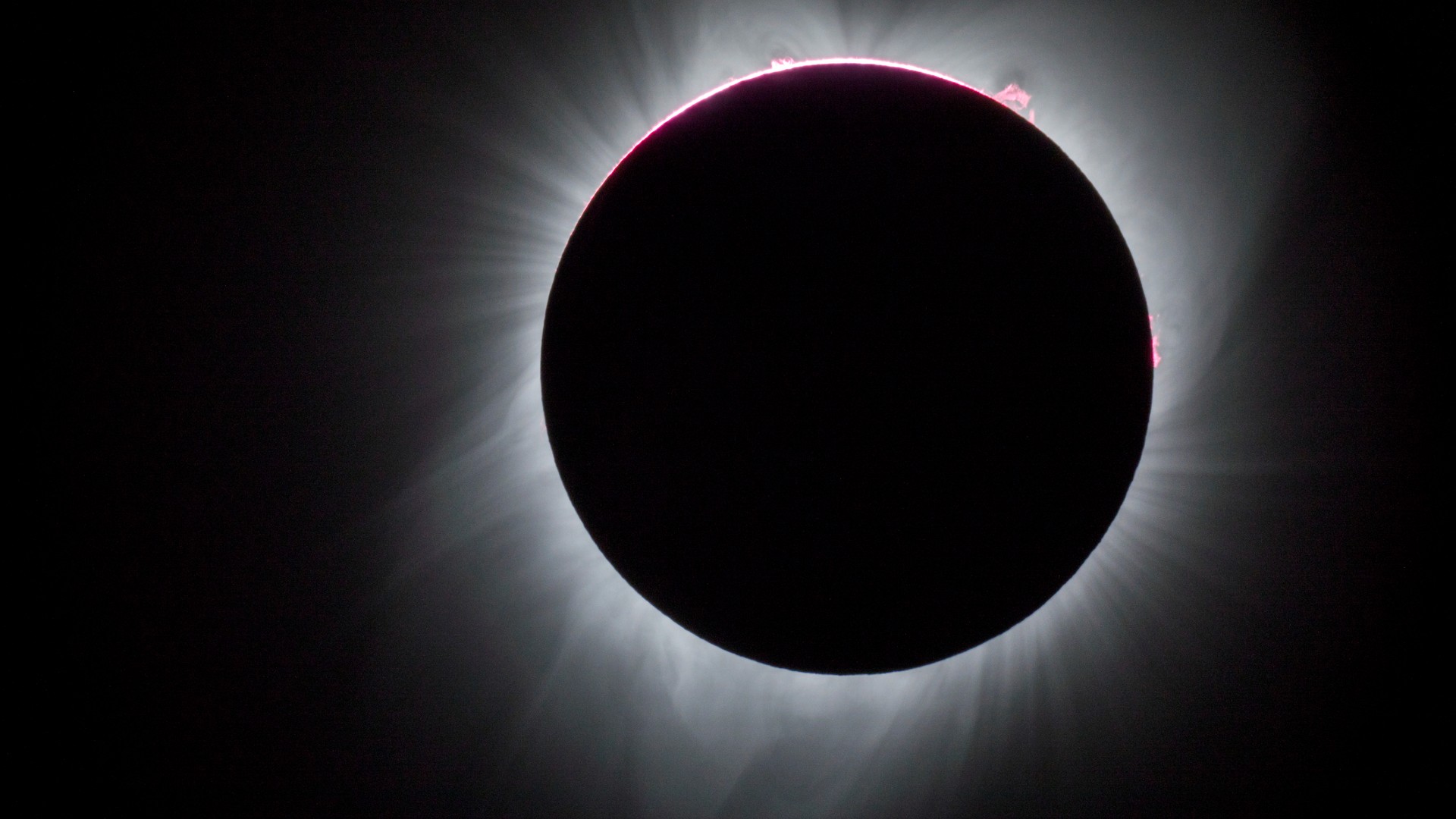
A total solar eclipse seen against a black sky shows the sun blocked by the moon with a white outflow behind which is the sun’s outer atmosphere.
黑色天空背景下的日全食,月球完全遮挡太阳,后方可见白色的太阳外层大气(日冕)
A total solar eclipse occurs when the moon completely blocks the sun. (Image credit: Paul Souders/Getty Images)
当日球完全遮挡太阳时,就会发生日全食。(图片来源:保罗·苏德斯/盖蒂图片社)
A solar eclipse happens when the moon is aligned directly between the sun and Earth. During a total solar eclipse, the dark silhouette of the moon appears to block out the sun so precisely that, during the few minutes of totality, the sun’s corona, or outer atmosphere, is still visible. There is no reason that this effect should happen with the precision it does, or that the two bodies should appear so close in size. In reality, tens of millions of our moon could fit in the sun if it were hollowed out. Still, when the alignment of the sun, moon and Earth is perfect, people in a few areas can observe the marvel of this cosmic coincidence in our skies.
当月球正好位于太阳和地球之间时,就会发生日食。日全食期间,月球的黑色轮廓会精准遮挡太阳,在全食持续的短短几分钟内,太阳的日冕(外层大气)仍能被看到。这种精准的遮挡效果并没有必然原因,太阳和月球看起来大小如此接近也纯属偶然。事实上,如果太阳是中空的,能容纳数千万个月球。但当太阳、月球和地球完全成一直线时,部分地区的人们就能在天空中目睹这一宇宙巧合的奇观。
9. The moon’s appearance can be affected by “Earthshine”
9. “地照”会影响月球的外观
On a clear night, you might notice that although only part of the moon is illuminated, you can also see the faint circle of the rest of the moon. This is caused by a phenomenon called Earthshine. Just as moonlight is caused by the moon reflecting light from the sun, Earth also reflects that light. This means that part of Earth would appear bright if you were to stand on the moon, and it also causes Earth to cast some of that light back onto the moon. So, even when no sunlight is cast on a portion of the moon, Earthshine can faintly illuminate its dark regions.
在晴朗的夜晚,你可能会发现,尽管月球只有一部分被照亮,但你仍能看到其余部分模糊的轮廓。这是由一种名为“地照”的现象造成的。就像月光是月球反射太阳光形成的一样,地球也会反射太阳光。这意味着,如果你站在月球上,地球的部分区域会显得很明亮,同时地球还会将部分太阳光反射回月球。因此,即使月球的某一部分没有被阳光照射,地照也能微弱照亮其黑暗区域。
10. The moon has a unique smell
10. 月球有独特的气味
The moon has no substantial atmosphere and, therefore, no air. However, the Apollo 11 astronauts were surprised to discover that the moon has a smell, which clung to their spacesuits, equipment and the lunar samples they collected and was detectable once they were in an environment with air again. Apollo astronauts described the smell as metallic, similar to burnt gunpowder or the smell in the air after a firecracker goes off. The smell was likely caused by a chemical reaction between something in lunar dust and the oxygen in the air. However, lunar samples on Earth do not smell, so it must be due to a temporary reaction.
月球没有浓厚的大气层,因此也没有空气。但阿波罗 11 号宇航员惊讶地发现,月球有气味——这种气味会附着在他们的宇航服、设备和收集的月球样本上,当他们再次进入有空气的环境后就能闻到。阿波罗宇航员将这种气味描述为金属味,类似烧焦的火药,或是鞭炮燃放后空气中的味道。这种气味可能是月球尘埃中的某种物质与空气中的氧气发生化学反应产生的。但地球上的月球样本并没有气味,因此这必定是一种暂时性反应。
Rebecca Sohn
丽贝卡·索恩
Contributing Writer
特约撰稿人
月球每年远离地球,但不会逃离地球
撰文:Stephen DiKerby
翻译:陈子鹏
审校:王昱

月球上的“地升”,由阿波罗8号宇航员拍摄。图片来源:比尔·安德斯摄/NASA
月球的远离现象
月球每年以约 3.8 厘米 3.8 \, \text{厘米} 3.8厘米 的速度远离地球。太空探测器和宇航员曾在月球表面放置反射器,科学家通过反射激光测量地月之间的距离。通过测量光往返月球所需的时间,科学家可以非常精确地测量地月之间的距离及其变化。
实际上,在每个月的时间里(大致是月球环绕地球一周的时间),地月之间的距离都会发生变化。月球平均距离地球 385000 千米 385000 \, \text{千米} 385000千米,但它的轨道并非完美的正圆,绕地球公转时距离变化可达 20000 千米 20000 \, \text{千米} 20000千米。这一变化会导致有时的满月看上去比其他时候大,此时的满月被称为超级月亮。
潮汐力的作用
月球离我们越来越远的原因是潮汐力。潮汐源自物体之间的引力差。月球施加给地球的引力在地球面向月球的一侧比背对月球的一侧强约 4 % 4\% 4%,因为引力随着距离的增加而减弱。
这种潮汐力导致海洋在朝向和背离月球的两个方向上凸起并产生晃动。月球的引力在靠近地球的一侧最强,形成一个指向月球的凸起;在背离地球的另一边最弱,又留下另一个滞后于地球上其他地区的凸起。
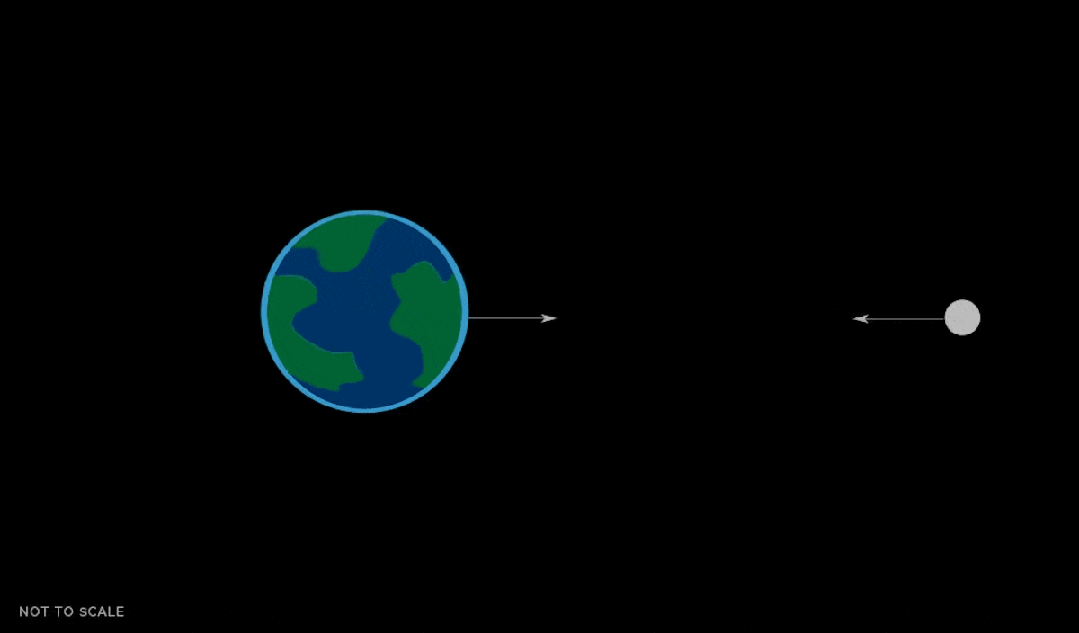
这幅由NASA制作的动图描述了月球是如何造成地球上的潮汐现象的。海洋里的水在朝向和背离月球的方向晃动。动图未按比例绘制。图片来源:NASA/Vi Nguyen
随着地球的自转,潮汐隆起会因月球的引力而指向月球运动。潮汐隆起导致海水水位变化可达1.5米。这些隆起并非完全朝向月球,而是因地球自转略微“领先”于月球。这些隆起也会对月球产生引力,靠近月球的隆起不仅将月球拉向地球中心,还会使其在轨道方向上加速。
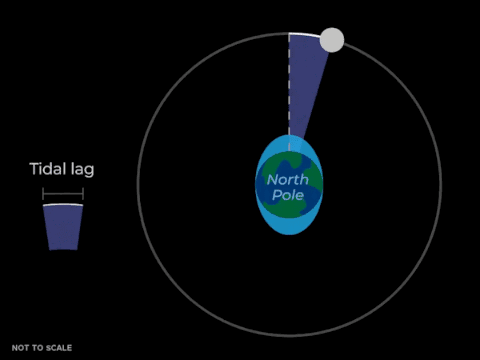
当月球围绕地球运行时,潮汐隆起并不完全指向月球,而是因地球自转的摩擦而稍微提前。图片来源:NASA/Vi Nguyen
靠近月球的潮汐隆起的引力导致月球加速,使其轨道尺寸逐渐增大。因此,月球轨道半径在缓慢增加,月球与地球的距离也在缓慢增大。这种影响是持续而轻微的,只有通过多年平均值的测量才能检测到。
对地球的影响
月球的轨道半径越大,其动量就越大。因为地球在增大月球的动量,所以随着动量流向月球,地球的自转速度也会相应减慢。这种交换会使得一天的长度缓慢增加。
但这一影响很小:每年 3.8 厘米 3.8 \, \text{厘米} 3.8厘米 相比 384000 千米 384000 \, \text{千米} 384000千米 的地月距,每年的改变量仅有 0.00000001 % 0.00000001\% 0.00000001%。在接下来的数百万年里,我们还能看到日食、潮汐,过着一天 24 小时 24 \, \text{小时} 24小时 的生活。
月球的过去与未来
月球的形成与过去
月球可能形成于大约 45 亿年 45 \, \text{亿年} 45亿年 前,彼时的新生地球被一颗火星大小的原行星撞击,导致大量物质被抛入太空。最终这些物质形成了月球,新生的月球离地球更近。那时你能在天上看到一轮大得多的月亮。
未来的演变
那么月球会进一步远离地球,最终逃脱地球的引力吗?如果我们将时间快进数百亿年,最终地球的自转可能会减慢,直到它与月球互相潮汐锁定。这意味着地球自转的时间与月球公转的时间一样长。由此一来,月球将不会离地球更远,而你也只能从地球的一侧看到月球。
然而有两件事会阻止这种情况发生。其一,在未来的数十亿年里,太阳将变得更亮,并使海洋沸腾气化,这样一来就不会有大的潮汐隆起导致月球变得更远。其二,几十亿年后太阳将膨胀成一颗红巨星,这可能将直接摧毁地球和月球。
不过这些事件都发生在遥远的未来,你大可以安心在海滩上坐看潮起潮落、观测日食,以及欣赏我们美丽的月亮。
ref:
- Stephen DiKerby. (2025). The Moon is getting slightly farther away from the Earth each year: A physicist explains why. The Conversation. Retrieved from
https://theconversation.com/the-moon-is-getting-slightly-farther-away-from-the-earth-each-year-a-physicist-explains-why-262106
via:
- How Old Is the Moon? Scientists Say They Finally Know | Space
https://www.space.com/35291-moon-age-pinned-down.html
How the Moon Formed: 5 Wild Lunar Theories | Space
https://www.space.com/25322-moon-formation-wild-theories.html - 10 fascinating facts about the moon | Space
https://www.space.com/19619-top-10-moon-facts.html - 月球每年远离地球一点,最后会逃离地球?不会,在那之前月球已经完蛋了
https://mp.weixin.qq.com/s/8i2H4vHLY2Ui2L4qrEVgVA





















 6021
6021

 被折叠的 条评论
为什么被折叠?
被折叠的 条评论
为什么被折叠?








